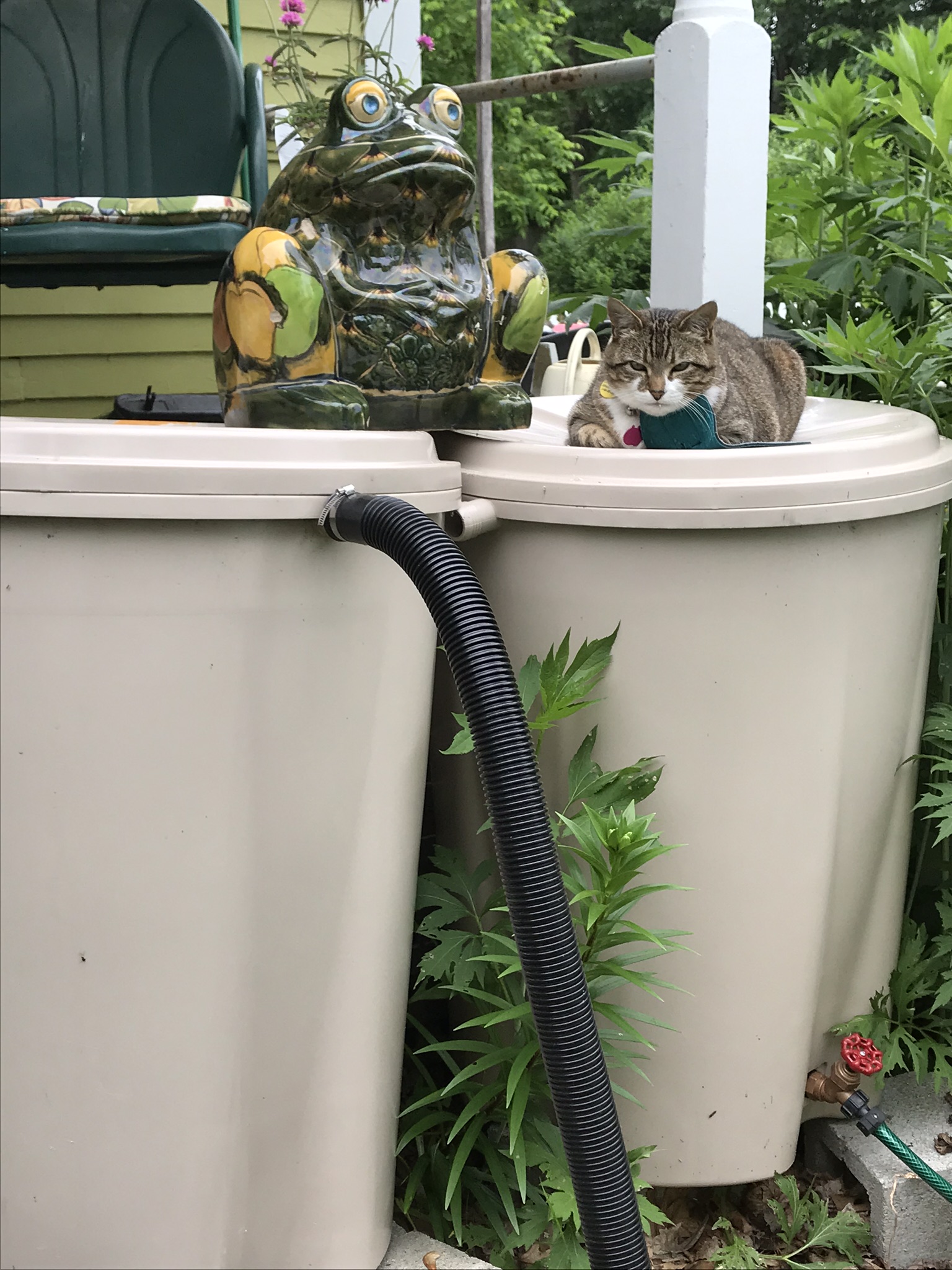HEALING THE EARTH FROM HOME
“Wait Mommy, I’ll turn on the rain for you!” my young daughter said as she ran to one of the barrels along the dripline of our roof years ago. Our NH mud, rain and gardening seasons are coming quickly into view on these warm, March days. The City of Keene offers “seasonal water meters” to reduce the cost of our sewer bills for those who use a great amount of water gardening and landscaping. But rain barrels can do double or triple duty providing multiple benefits to homeowners willing to do some figuring. And jeez, rainwater is free!
The Ecology Center of Normal IL states that “Collecting rainwater for use during dry months in rain barrels or other depositories is an ancient and traditional practice. Historical records show that rainwater was collected in simple clay containers as far back as 2,000 years ago in Thailand…” And luckily this activity is legal in New Hampshire. But the same cannot be said for all of our United States. As you might suspect, to date there are no Federal laws on the subject.
So why bother? Well, “rainwater harvesting” not only saves expensive, purified water, but it can also reduce stormwater flooding when many households participate by storing and delaying the release of rain during significant storm events. The beauty is that each homeowner can take part in rainwater harvesting as they see fit. But collectively, an entire neighborhood prone to seasonal flooding can benefit. The Natural Resources Defense Council states that “Our analysis shows that solutions to one of America’s biggest urban challenges are right in front of us – in this case, literally falling from the sky,” said Noah Garrison, lead author of the report and NRDC water policy analyst. “The potential exists for cities throughout the U.S. to capture hundreds of millions or even billions of gallons of rainwater each year from urban rooftops.”
I have noticed that fewer homeowners have rain gutters in the NE. You could consider, as I did, installing a gutter only on the side of your home that has basement flooding issues. Or, as I have also done, creatively mount a gutter on top of several barrels along one of your home’s roof’s drip lines. Now granted there are a bevy of considerations such as convenient proximity to a non-food garden, screening to prevent mosquito breeding, an opaque container to prevent algae growth, strategic provisions for overflow and a willingness to empty and store or overturn the rain barrel for winter. There are many options for the actual rain barrel from lovely and expensive to a blue, 55-gallon, BPA-free and food grade barrel from a local business. Several barrels can be linked together depending on the size of your “roof catchment area”. That said, caution must be taken to site the barrel/s on a stable, level surface as they weigh approximately 450 pounds when full. Preferably they are raised to be able to access its spigot with a hose. See the footnote sources for additional information.
We Can Make a Difference Every Day.
HHH TIP: If you do only one thing, try one rain barrel. Create a level base where two roofs meet and catch this water for a season as an experiment. See what you think!
Michele Chalice is the owner of Keene-based, Healthy Home Habitats. She believes Americans have considerable consumer power to shift global resource markets by choosing renewable resources instead. She is a bit obsessed with finding and sharing ideas to decrease household resource consumption with creative ideas that collectively help to heal our world from home.

